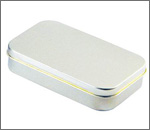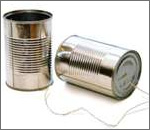Tin is a chemical element with the symbol Sn and atomic number 50. It is a main group metal in group 14 of the periodic table. Tin shows chemical similarity to both neighboring group 14 elements, germanium and lead, like the two possible oxidation states +2 and +4. Tin is the 49th most abundant element and has, with 10 stable isotopes, the largest number of stable isotopes in th

e periodic table. Tin is obtained chiefly from the mineral cassiterite, where it occurs as tin dioxide, SnO2.
This silvery, malleable poor metal is not easily oxidized in air, and is used to coat other metals to prevent corrosion. The first alloy used in large scale since 3000 BC was bronze, an alloy of tin and copper. After 600 BC pure metallic tin was produced. Pewter, which is an alloy of 85% to 90% tin with the remainder commonly consisting of copper, antimony and lead, was used for flatware from the Bronze Age until the 20th century. In modern times tin is used in many alloys, most notably tin/lead soft solders, typically containing 60% or more of tin. Another large application for tin is corrosion-resistant tin plating of steel. Because of its low toxicity, tin-plated metal is also used for food packaging, giving the name to tin cans, which are made mostly out of aluminium or tin-plated steel.
Tin is a malleable, ductile, and highly crystalline silvery-white metal. It is malleable at ordinary temperatures but is brittle when it is cooled, due to the properties of its two major allotropes, α- and β-tin. When a bar of tin is bent, a crackling sound known as the tin cry can be heard due to the twinning of the crystals. The two allotropes that are encountered at normal pressure and temperature, α-tin and β-tin, are more commonly known as gray tin, and respectively white tin. Two more allotropes, γ and σ, exist at temperatures above 161 °C and pressures above several GPa. White tin, or the β-form, is metallic, and is the stable one at room conditions or at higher temperatures. Below 13.2 °C, tin exists in the gray α-form, which has a diamond cubic crystal structure, similar to diamond, silicon or germanium. Gray tin has no metallic properties at all, is a dull-gray powdery material, and has few uses, other than a few specialized semiconductor applications.
Although the α-β transformation temperature is nominally 13.2 °C, impurities (e.g. Al, Zn, etc.) lower the transition temperature well below 0 °C, and upon addition of Sb or Bi the transformation may not occur at all. This conversion is known as tin disease or tin pest. Tin pest was a particular problem in northern Europe in the 18th century as organ pipes made of tin alloy would

sometimes be affected during long cold winters. Some sources also say that during Napoleon's Russian campaign of 1812, the temperatures became so cold that the tin buttons on the soldiers' uniforms disintegrated, contributing to the defeat of the Grande Armée. The veracity of this story is debatable, because the transformation to gray tin often takes a reasonably long time.
Commercial grades of tin (99.8%) resist transformation because of the inhibiting effect of the small amounts of bismuth, antimony, lead, and silver present as impurities. Alloying elements such as copper, antimony, bismuth, cadmium, and silver increase its hardness. Tin tends rather easily to form hard, brittle intermetallic phases, which are often undesirable. It does not form wide solid solution ranges in other metals in general, and there are few elements that have appreciable solid solubility in tin. Simple eutectic systems, however, occur with bismuth, gallium, lead, thallium, and zinc.


